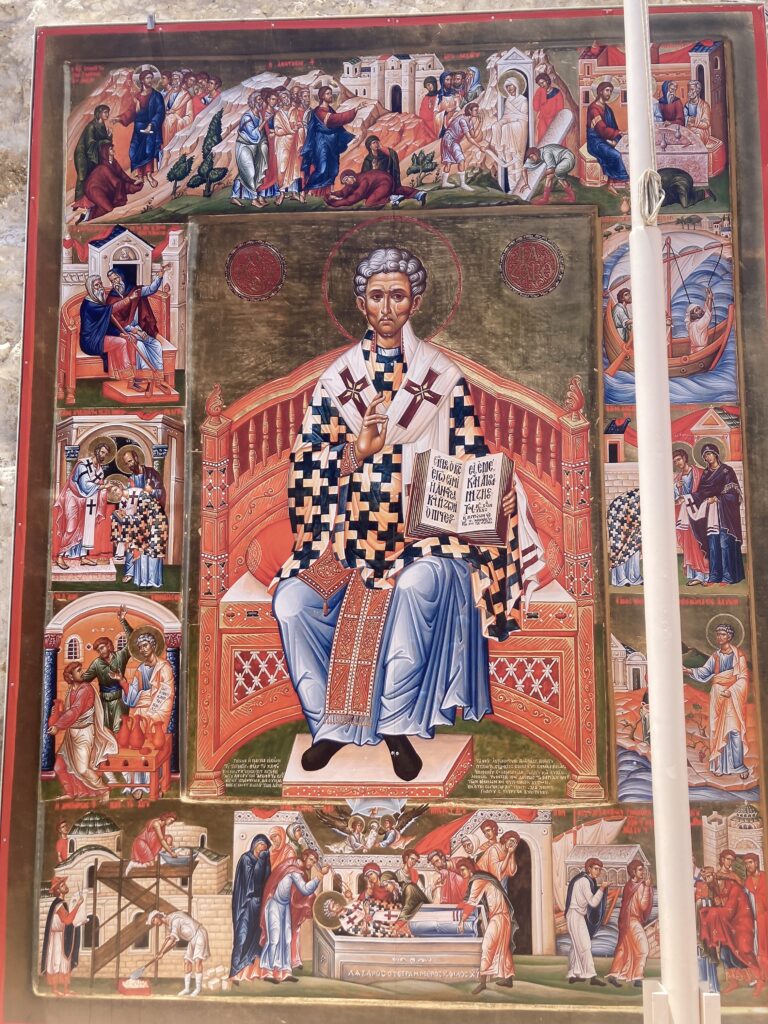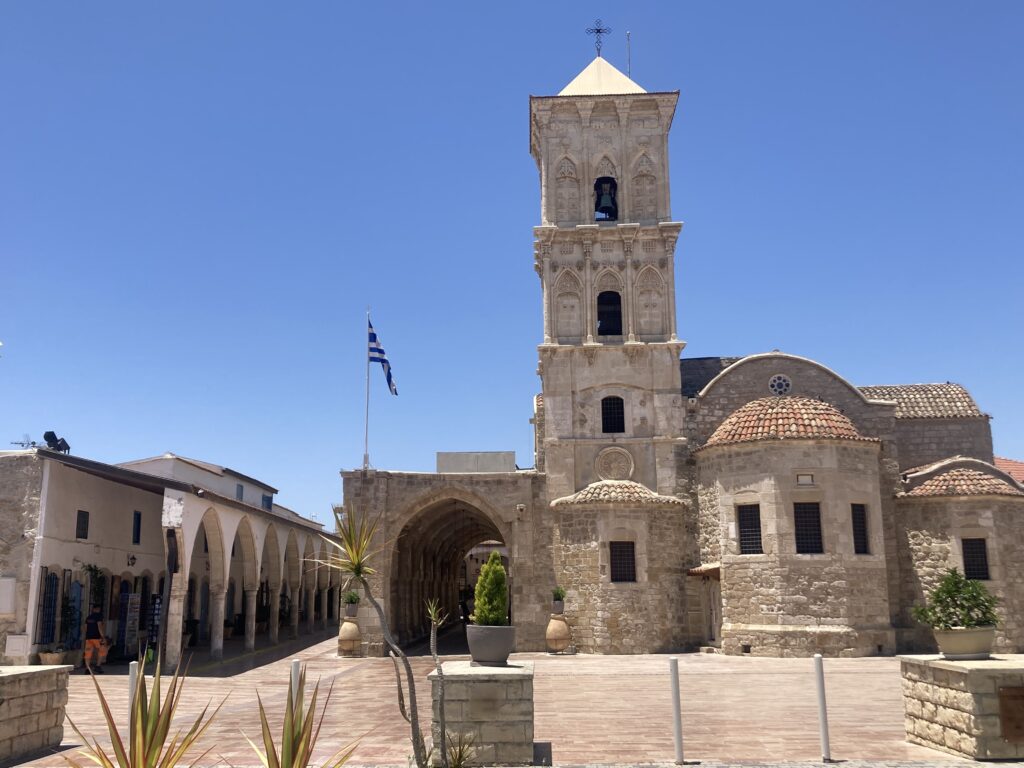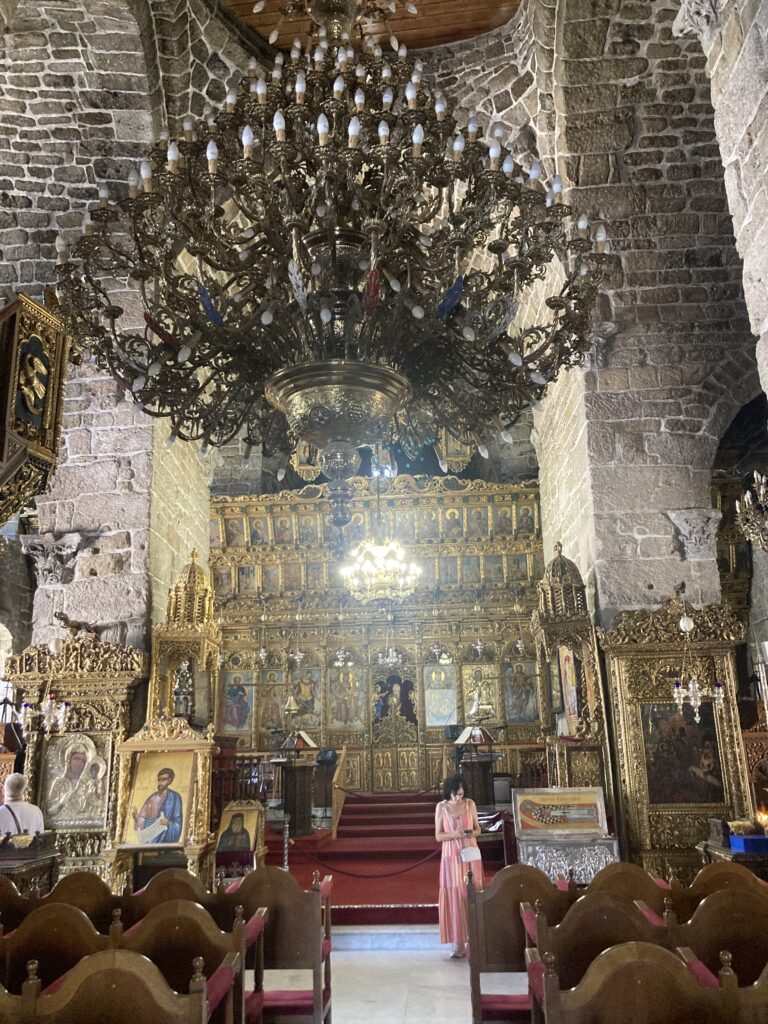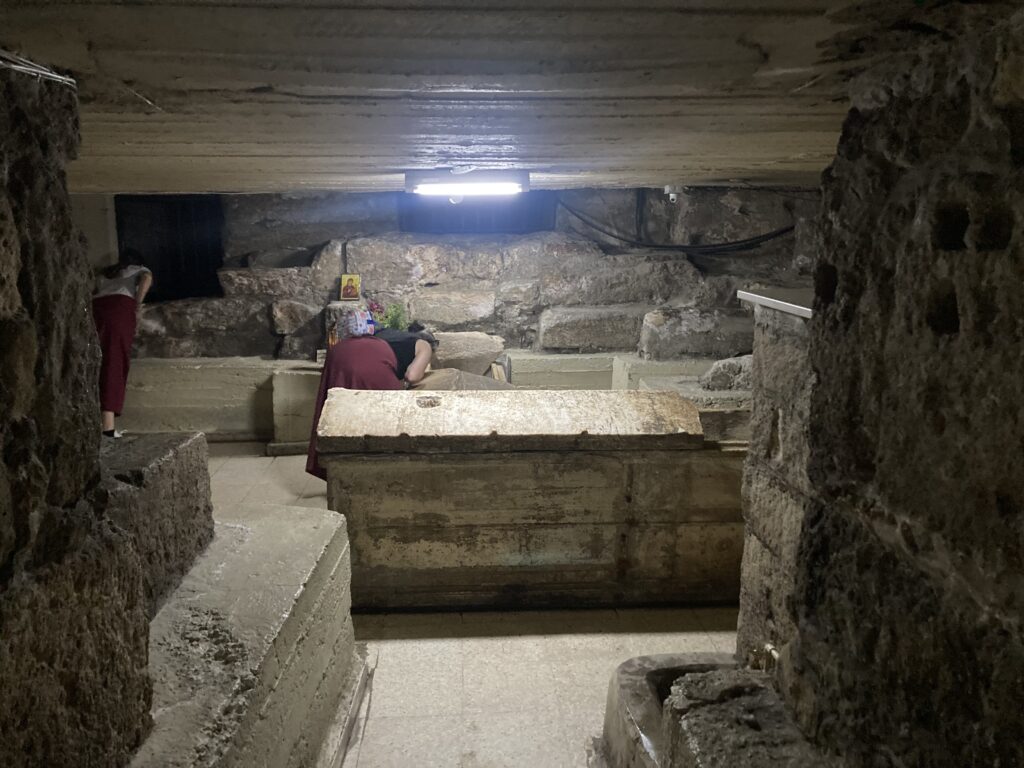Joaquin Pellegrin-Alvarez
When I got to Cyprus and started walking around the city of Larnaka, where we’re staying, one question kept coming to mind…
Who’s this ‘Agios Lazaros’ guy?
I saw his name everywhere, on local schools, on the names of businesses, and even on the very few street signs that exist in Larnaka (apparently most people don’t really care about them here). Then, after seeing the name ‘Agios Nikolaos’ on bottled water translated to ‘Saint Nicholas’ on English versions of the brand, I realized that Agios means ‘saint’ and isn’t a first name, thus the name I was seeing everywhere was Saint Lazarus. So…
Who’s this Saint Lazarus guy?

Before I got to Cyprus all I knew about Lazarus was that he was the one Jesus raised from the dead, and so lent his name to stuff like a ‘Lazarus taxon,’ which is what I was much more interested in when I learned about the guy who inspired it. But he’s actually quite important, with his resurrection from his tomb at Bethany being seen as a pivotal point leading to the Crucifixion, at least biblically, though such an event is only reported on in the Gospel of John, leading to much discourse about where the story actually came from (if Jesus did such a cool thing, or was thought to have done such a cool thing, why does only the latest of the gospels, written some seventy years after his death, mention it, instead of the earlier ones of Luke, Matthew, and Mark?).
But why is Lazarus such a big deal on Cyprus, and in Larnaka specifically? Well, according to local and pretty old Christian tradition, Lazarus fled to Cyprus after worrying he’d be executed like Jesus, and there, by the Apostle Paul, was made Bishop of Kition (the name for Larnaka at the time, Larnaka being a resettlement after 4th-century earthquakes destroyed Kition). Many stories surround his life on the island. During his episcopate, Lazarus never smiled, traumatized and fretting about the many condemned souls he saw in the afterlife, except for once, when he made a pun about a robber stealing a pot (“the clay steals the clay”). Passing a vineyard just outside town, he asked for some grapes from the vintner, and was turned down, so Lazarus turned the vineyard to salt and now we have the salt lakes outside of Larnaka. On another occasion, Lazarus invited Mary, mother of Jesus, and the Apostle John, who allegedly penned the Gospel of John, to Cyprus, but they crashed on Mount Athos. There, Mary converted the locals, blessed the land, went to Cyprus, blessed Larnaka as well, and went back to Judea.
Legitimizing or originating the story of Lazarus in Larnaka, in 890, after a few centuries of conflict between the Byzantine Empire and the Umayyad and Abbasid Caliphates taking place on Cyprus (wherein the archbishop fled to a small island near Constantinople for a few years), someone apparently found a sarcophagus under the local church with the words “Lazarus, four days dead and friend of Christ” written on it, and so the Byzantine emperor took it and the bones inside of it to Constantinople and built a big new church in Larnaka, with five domes (which I’ve been told are significant because only some extra special churches get multiple domes).

When the crusaders seized the island some centuries later the building became a Roman Catholic church, a Benedictine monastery, and an Armenian Catholic church in succession, and the conquerors built the portico you can see below the Greek flag. When the same crusaders sacked Constantinople they took the relics of Saint Lazarus to Marseille in France, where a separate but similar tradition exists that claims Lazarus was instead bishop there (despite only being resurrected once, Lazarus has three tombs, one at Bethany, one at Larnaka, and one at Autun far north of Marseille, so for a time France had two Lazaruses), though eventually those relics vanished.

After the Catholics the Ottomans were in possession of the island, converting the church to a mosque, and tearing down the bell tower and two of the five domes (though some say this instead happened later in retaliation for the Greek War of Independence). It was only a mosque for a couple decades before being sold by the Ottomans to the Orthodox church for 3,000 gold coins, and Catholics were permitted to hold services in a much smaller chapel next to the church. Later, in the 18th-century, many of the current icons were painted, and in the 19th-century the Ottomans permitted the church to build a bell tower (though some say the government had made an exception and the church was happily using its bells long before the 19th-century).

Becoming the central church for the city of Larnaka, whose population would expand over the Ottoman period as trade routes shifted and other ports declined, the church was said to be equally as popular a pilgrimage site as many places in the Holy Land. In 1970 a fire broke out and damaged the building, and during the repairs in the following few years a tomb was found underground, with the word “Friend” written on it, naturally taken to be that of Lazarus, the Byzantines apparently not taking nearly as many relics as reported, if this is indeed the same tomb as from 890. As banners around the church plaza proclaim, this is indeed the ‘City of Saint Lazarus,’ if he didn’t end up in France instead.
